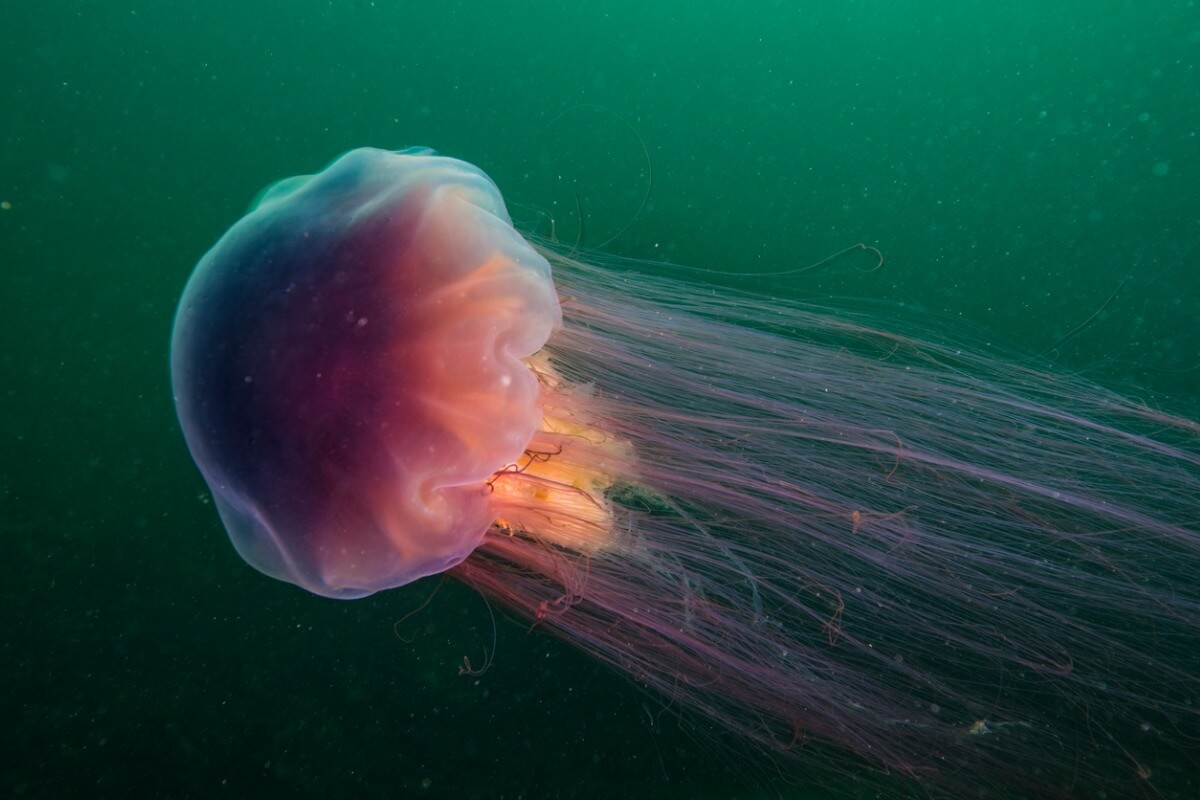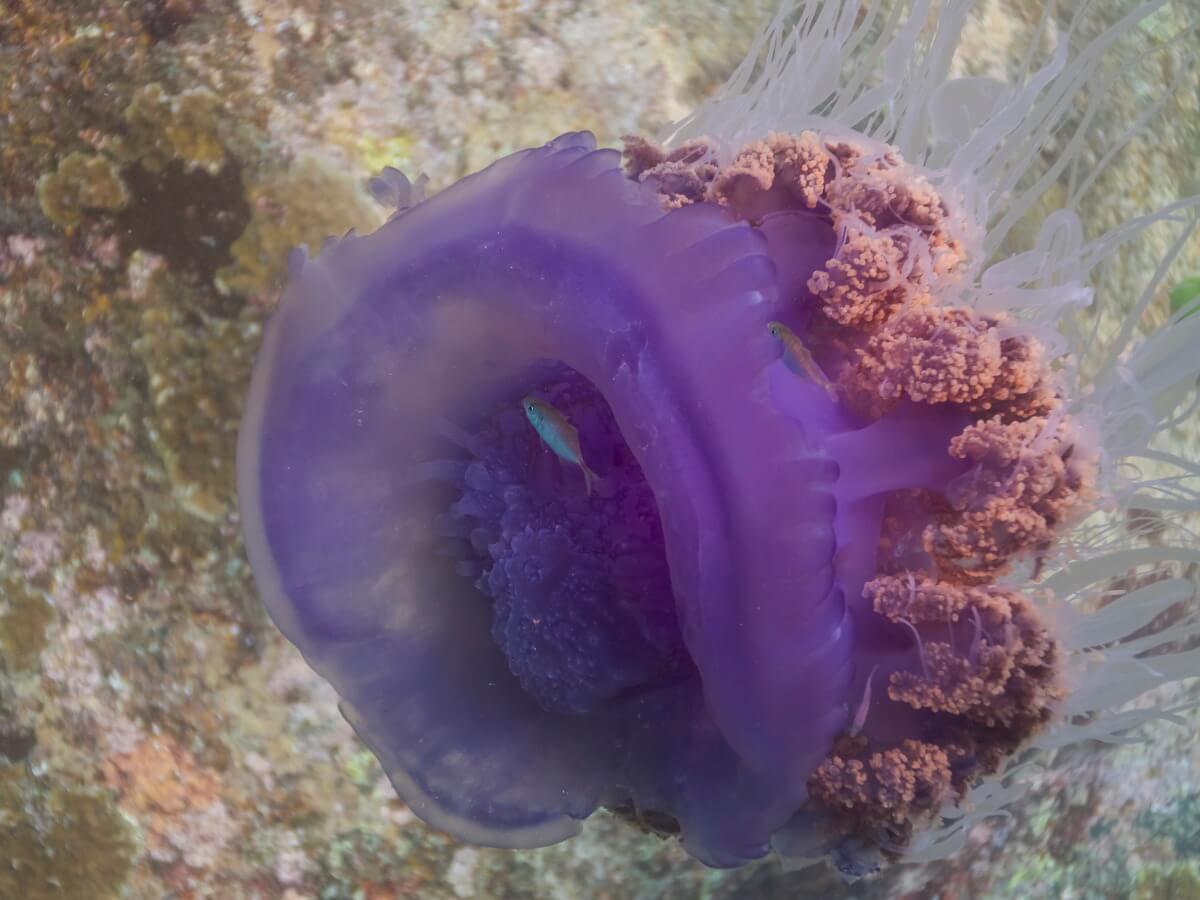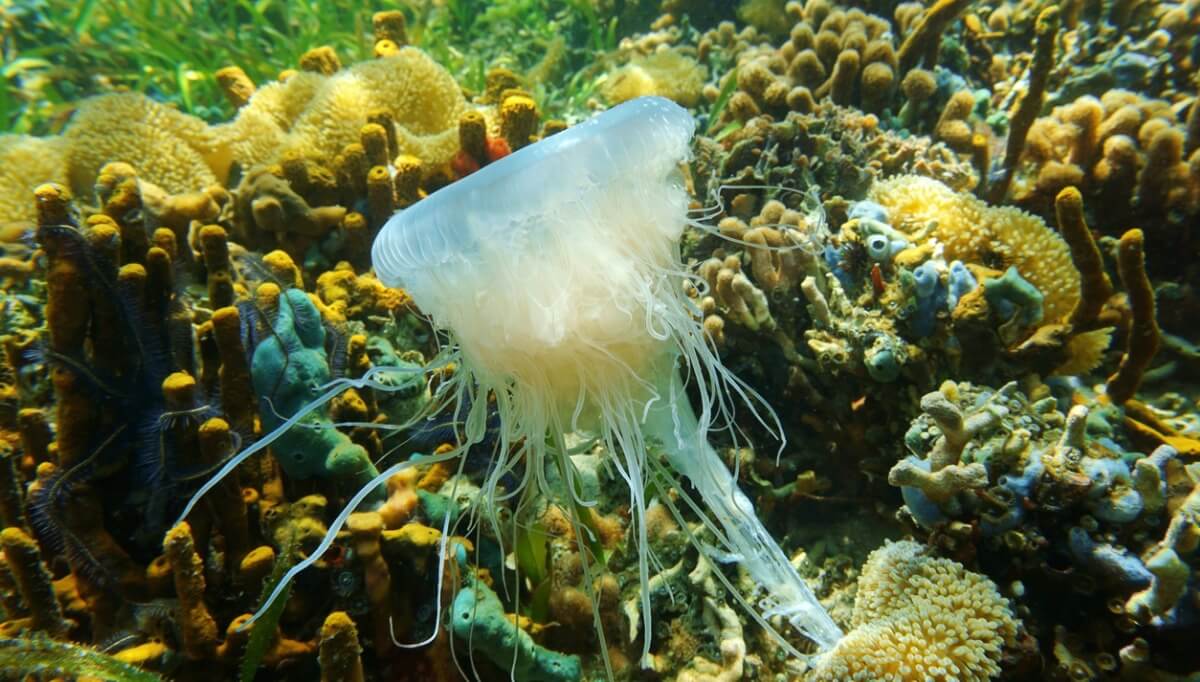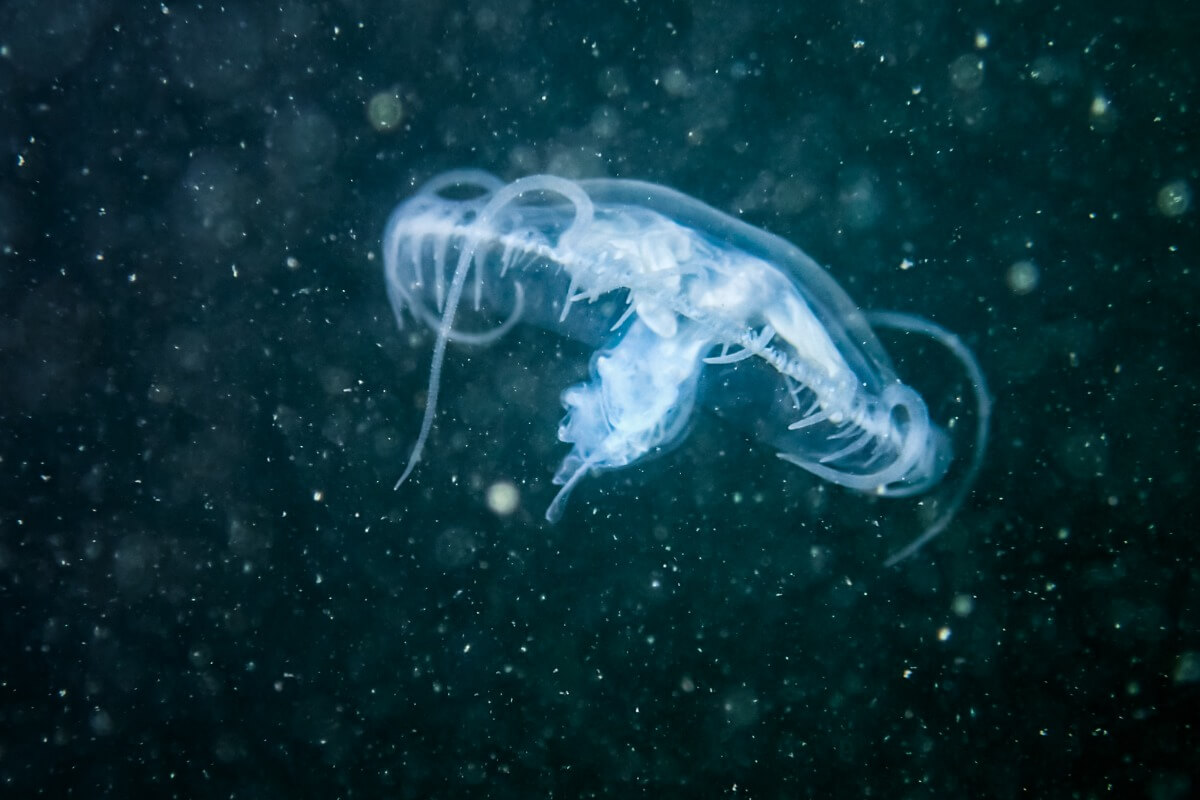The 6 Largest Jellyfish in the World


Written and verified by the biologist Cesar Paul Gonzalez Gonzalez
As if they were living jellies, jellyfish are organisms that are made up of more than 90% water. Despite being so simple, they can grow to be enormous. Because the water supports the weight of these organisms, the jellyfish can grow as big as they need to be. Thanks to this, there are several jellyfish that are among some of the largest invertebrates in the world.
If you think a jellyfish the size of your hand is the biggest these invertebrates can grow, read on. You’ll be surprised to meet these real monsters.
1. Lion’s mane jellyfish (Cyanea capillata)
Capable of reaching up to 36 meters (120 feet) in length, this jellyfish is rare in anthropic environments. Because its natural habitat is restricted to the abyssal depths (deep sea), this invertebrate doesn’t come into contact with humans. Its coloration can vary between yellow and orange, depending on the individual.
Don’t worry, despite its size, it isn’t a species you should fear. Of course, you shouldn’t touch its tentacles, as it could cause severe dermatitis. Its venom isn’t lethal to man, but that doesn’t mean that it won’t be painful.

2. Crown jellyfish (Cephea cephea)
Due to its characteristic shape, this jellyfish has earned the name of crown jellyfish. Reaching 50 to 60 cm (20 – 24 inches) in diameter, this invertebrate is characterized by having widely branched tentacles. The wavy shape of its bell gives it its interesting nickname.
Although it’s wider than it is long, it’s still one of the largest jellyfish in the world.

3. Nomura jellyfish (Nemopilema nomurai)
Directly from the seas of Japan, this species can reach 2 meters (80 inches) in diameter, weighing up to 200 kilograms (440 lb). The coloration of this jellyfish is between red and pink.
It belongs to a family of jellyfish that are characterized by having root-shaped tentacles and by producing ephyra. These ephyrae are the juvenile form of the species and grow to the appropriate size. In other words, they’re baby jellyfish, uncommon in other species.
4. The deep-sea jellyfish (Stygiomedusa gigantea)
As its name suggests, this invertebrate lives mainly in the depths of the sea. Specimens have been found up to 1700 meters (5600 feet) deep. However, they have also occasionally been seen near the surface. It is believed that, because there’s no light in its habitat, its coloration is transparent, which is why it’s also called the ‘ghost jellyfish’.
This species has only been sighted around 110 times, and so it remains a great unknown for scientists.
5. The pink meanie (Drymonema larsoni)
This is a predatory jellyfish. It’s known to be an active predator of Aurelia aurita, the common jellyfish, as it’s several times its size. It can reach almost a meter in diameter and 25 kilograms (55 lb) in weight, which makes it a good candidate among the largest jellyfish species in the world.
Its characteristic pink color and the shape of its tentacles, which make it appear to have curls, are what have earned this animal the name in English ‘Pink meanie’.

6. Barrel jellyfish (Rhizostoma pulmo)
This jellyfish is almost the size of a person. It may be hard to believe, but it’s one of the most common along the shores of the Mediterranean. It reaches a diameter of between 50 and 60 centimeters (20-24 inches), although when it begins to grow it measures only a few millimeters.
It appears to have 8 harmless cottony tentacles, but this is misleading as they are powerful stingers. In addition, it’s a translucent invertebrate and its colors can vary slightly between green, black, brown and blue.

Endangered species vs pest species
In general, jellyfish aren’t currently in danger of extinction. However, this isn’t necessarily true, as the lack of classification may simply be due to a lack of information and research on the part of the scientific community.
This group may be one of the most diverse in existence, as its representatives have lived on Earth for 500 million years, according to research. Even so, due to the difficulties in carrying out research at sea, we may still be unaware of many species.
According to the information currently available, this type of invertebrate has 2 main risks: climate change and the increase in its population.
Due to changes in marine temperature and thermal gradients, different species can suffer displacement. This causes them to colonize new habitats and become pest species, as has already been recorded in multiple investigations.
On the other hand, the sudden increase in the number of jellyfish must be taken into account. In a normal situation, populations are limited by the amount of food, however this is currently changing. Due to contamination, plankton outcrop events take place, which serve as food for the jellyfish.
Although this doesn’t seem bad in itself, it should be noted that any unnatural action has the potential risk of presenting a reaction of the same intensity, but in the opposite direction. Jellyfish overgrowth could jeopardize the integrity of many species.

Although we’ve focused on jellyfish that are among the largest in the world, these are definitely the minority. And, as you’ll know, the ones that reach the shore are usually on the small side.
All cited sources were thoroughly reviewed by our team to ensure their quality, reliability, currency, and validity. The bibliography of this article was considered reliable and of academic or scientific accuracy.
- Mendoza-Becerril, M. A., Argoytia, L. L., & Agüero, J. (2019). Diminutas y valiosas hidromedusas. Ecofronteras, 30-33.
- Omori, M., & Nakano, E. (2001). Jellyfish fisheries in southeast Asia. Hydrobiologia, 451(1), 19-26.
- SUGIURA, Y. (1966). On the life‐history of Rhizostome medusae IV. Cephea cephea. Embryologia, 9(2), 105-122.
- Kawahara, M., Uye, S. I., Ohtsu, K., & Iizumi, H. (2006). Unusual population explosion of the giant jellyfish Nemopilema nomurai (Scyphozoa: Rhizostomeae) in East Asian waters. Marine Ecology Progress Series, 307, 161-173.
- Lindsay D, Van de Putte A (2019). In situ observations of Stygiomedusa gigantea. SCAR – AntOBIS. Occurrence dataset https://doi.org/10.15468/ixtssp accessed via GBIF.org on 2020-06-04. accessed via GBIF.org on 2021-05-10.
- Varela, C., González-Díaz, S. P., Fernández, S. Á., & Clero, L. (2014). Primer registro de la familia Drymonematidae (Cnidaria: Scyphozoa) para el Archipiélago cubano/New record of the family Drymonematidae (Cnidaria: Scyphozoa) for the Cuban Archipelago. Revista de Investigaciones Marinas, 31(2), 105-107.
This text is provided for informational purposes only and does not replace consultation with a professional. If in doubt, consult your specialist.